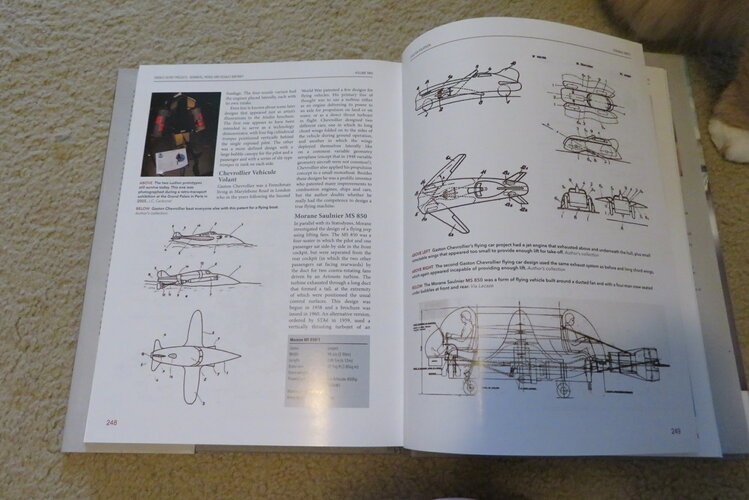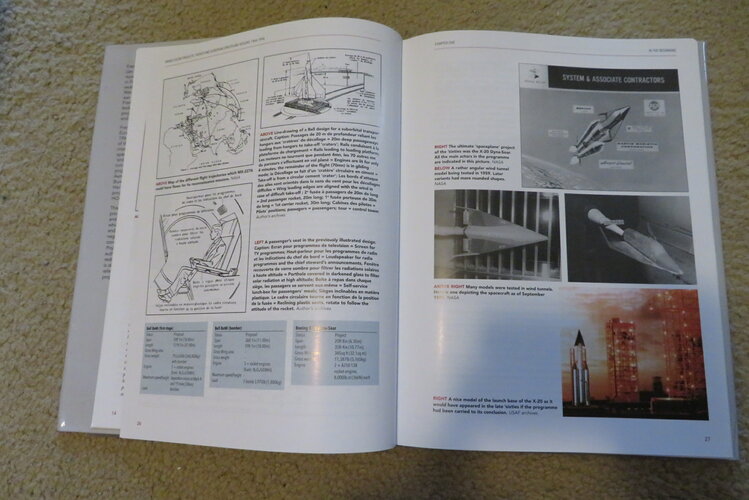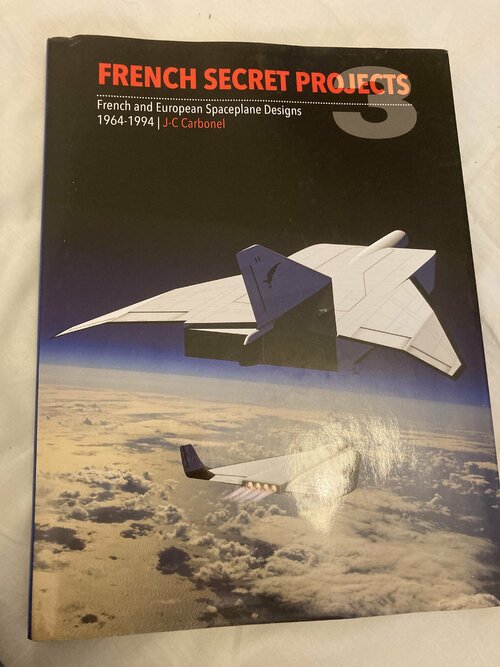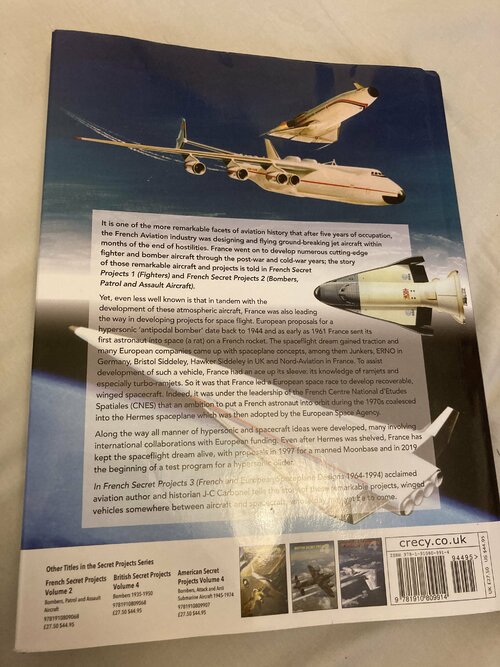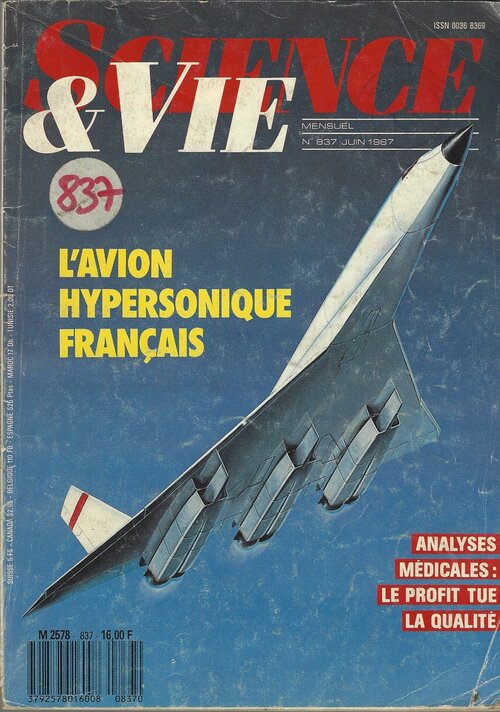You are using an out of date browser. It may not display this or other websites correctly.
You should upgrade or use an alternative browser.
You should upgrade or use an alternative browser.
French Secret Projects 3
- Thread starter JC Carbonel
- Start date
southwestforests
ACCESS: Top Secret
- Joined
- 28 June 2012
- Messages
- 758
- Reaction score
- 1,229
Now there is an example of love in action.I just got my wife ordering book 2 and book 3 for my birthday.
southwestforests
ACCESS: Top Secret
- Joined
- 28 June 2012
- Messages
- 758
- Reaction score
- 1,229
I confirm: I love those books. Got "French secret projects" 2 and 3. Wonderful readings. The chapter on Nord VERAS was of particular interest, also MINERVE. There is a clear legacy between the 1959 Mirage IVB (B-58 size with Pratt' J75s) and the many Minerves trying the same thing circa 1963, with two major differences - the switch to Pratt TF- turbofans plus the french Skybolt / Hound dog / SRAMs missiles.
Which led to the X-422 prototype in 1967.
Filled a lot of gaps, thanks to Mr. Carbonel.
Which led to the X-422 prototype in 1967.
Filled a lot of gaps, thanks to Mr. Carbonel.
TheKutKu
ACCESS: Secret
- Joined
- 13 February 2023
- Messages
- 464
- Reaction score
- 1,387
Thanks for the opinion, I got it.The author is a well known reputable, respected and knowledgeable researcher in the aerospace field, and it does indeed contain information and illustrations I've never seen before. As someone who actually worked for a while in the area of European RLV studies (and some of whose FESTIP work is includedI'm interesting in getting this book, generally speaking, does it have a wealth of exclusive informations and pictures?), I highly recommend it.
Attachments
martinbayer
ACCESS: Top Secret
- Joined
- 6 January 2009
- Messages
- 3,397
- Reaction score
- 3,906
Pages 220 - 222 feature designs yours truly tinkered with in FESTIP on another continent in a bygone millennium...I love these designs, and this whole design era. I highly recommend JC Carbonel's French and European Spaceplane Designs, 1964 - 1994 in the French Secret Projects book series. Conveniently, the back cover blurb is even printed over a picture of the STS-2000, which is covered thoroughly. There's a lot of art and design material that I'd never seen before, and this really helped clarify the relationship between some of the confusingly similar designs like the STS-2000, Taranis, and the AGV.
NavarchNicias
ACCESS: Restricted
- Joined
- 23 March 2022
- Messages
- 35
- Reaction score
- 110
Pages 220 - 222 feature designs yours truly tinkered with in FESTIP on another continent in a bygone millennium...I love these designs, and this whole design era. I highly recommend JC Carbonel's French and European Spaceplane Designs, 1964 - 1994 in the French Secret Projects book series. Conveniently, the back cover blurb is even printed over a picture of the STS-2000, which is covered thoroughly. There's a lot of art and design material that I'd never seen before, and this really helped clarify the relationship between some of the confusingly similar designs like the STS-2000, Taranis, and the AGV.
Wouldn't happen to be FSSC-16 by any chance?
martinbayer
ACCESS: Top Secret
- Joined
- 6 January 2009
- Messages
- 3,397
- Reaction score
- 3,906
Yes, my very favorite brainchild design so far, including those perpendicularly installed airbreathing engines featured in two books to datePages 220 - 222 feature designs yours truly tinkered with in FESTIP on another continent in a bygone millennium...I love these designs, and this whole design era. I highly recommend JC Carbonel's French and European Spaceplane Designs, 1964 - 1994 in the French Secret Projects book series. Conveniently, the back cover blurb is even printed over a picture of the STS-2000, which is covered thoroughly. There's a lot of art and design material that I'd never seen before, and this really helped clarify the relationship between some of the confusingly similar designs like the STS-2000, Taranis, and the AGV.
Wouldn't happen to be FSSC-16 by any chance?
NavarchNicias
ACCESS: Restricted
- Joined
- 23 March 2022
- Messages
- 35
- Reaction score
- 110
Bravo! One of my favorites too. And it's one I keep coming back to. I hadn't seen the paper you posted on one of the other boards here, but I have now, and I really enjoyed reading it. My only complaint is that it needs a better name than FSSC-16. Did it ever pick up a nickname?
martinbayer
ACCESS: Top Secret
- Joined
- 6 January 2009
- Messages
- 3,397
- Reaction score
- 3,906
This having been a European bureaucracy study, nicknames were never any part of official considerations, but by all means, go creative on this one, since I'd love to keep the legacy aliveBravo! One of my favorites too. And it's one I keep coming back to. I hadn't seen the paper you posted on one of the other boards here, but I have now, and I really enjoyed reading it. My only complaint is that it needs a better name than FSSC-16. Did it ever pick up a nickname?
Last edited:
pathology_doc
ACCESS: Top Secret
- Joined
- 6 June 2008
- Messages
- 1,587
- Reaction score
- 1,510
Just finished French Secret Projects 3, and am scratching my head over how so many nations could spend so much time and money over so many years and wind up building practically nothing.
What it seems to boil down to, though, is that there's a region of the flight regime within which things get so difficult as to not be worth the trouble, and that region is bounded by the SR-71 on one side and the ICBM on the other. Once you get past the middle of Mach 3, it seems to be easier to switch to rockets and go all the way into space.
What it seems to boil down to, though, is that there's a region of the flight regime within which things get so difficult as to not be worth the trouble, and that region is bounded by the SR-71 on one side and the ICBM on the other. Once you get past the middle of Mach 3, it seems to be easier to switch to rockets and go all the way into space.
martinbayer
ACCESS: Top Secret
- Joined
- 6 January 2009
- Messages
- 3,397
- Reaction score
- 3,906
I think it came down to RLVs literally having to contend with bread and butter issues in post WWII Europe, even after economies had rebounded, because Western Europe, even with ESA, never was willing or able to formulate a concise proactive space policy that went beyond uncrewed Earth exploration and communication satellites and the odd exploration probe. European astronauts were always hitchhikers. Having grown up in Germany, I wish it would have been different, but ever after WWII Europe became afraid of its own shadow.
TheKutKu
ACCESS: Secret
- Joined
- 13 February 2023
- Messages
- 464
- Reaction score
- 1,387
The development of each new european Expendable launch vehicles was already a struggle involving years of negociations and compromise between countries and industrials (often with threats, applied even, of cutting all national fundings...) often in favourable political circumstances , from Europa to Ariane 6. And that was with *all* of them using proven technologies.Just finished French Secret Projects 3, and am scratching my head over how so many nations could spend so much time and money over so many years and wind up building practically nothing.
What it seems to boil down to, though, is that there's a region of the flight regime within which things get so difficult as to not be worth the trouble, and that region is bounded by the SR-71 on one side and the ICBM on the other. Once you get past the middle of Mach 3, it seems to be easier to switch to rockets and go all the way into space.
I don't think a multinational european RLV could ever have happened until it had already been proven and normalised abroad, as is starting to happen now.
T. A. Gardner
ACCESS: Top Secret
- Joined
- 18 February 2021
- Messages
- 1,152
- Reaction score
- 2,022
I personally would love to see far more on French missile and rocketry programs.
Similar threads
-
-
-
Forthcoming:British Secret Projects Vol 3 : Fighters 1935-1950
- Started by ov-101
- Replies: 7
-
British Secret Projects Volume 4:Bombers 1935-1950 by Tony Buttler
- Started by ov-101
- Replies: 46
-

